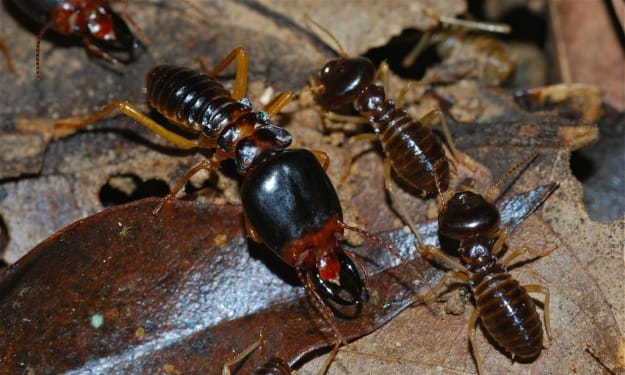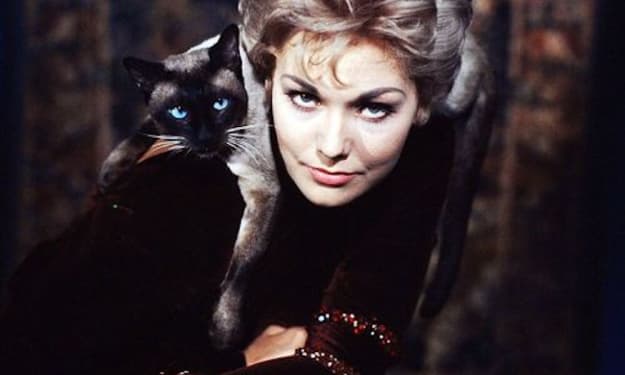
As an avid fish keeper, I noticed that there are not enough articles about tropical fish care. To be honest, for those who are wanting to start a tropical fish tank, it’s pretty difficult if you don’t know what you're doing.
I have complied a simple and easy guide to help those who want to start their very own tank.
Knowing the difference between tropical and cold-water fish
Many of you might be thinking, "yeah I already know this! Goldfish are cold, the rest are tropical and/or saltwater," but there are so many different types of "cold water fish" out there which are just as interesting. Not knowing the differences can be both fatal to your fish and sadness in your heart. If you take a look at the link provided—Masterfisch—you can browse the amazing cold-water fish.
Tropical fish are amazing and interesting creatures, and some are very interactive. But, if you're just starting out, I would highly recommend doing some research into the behaviours of some of these animals. So, for example, having two sharks in the same tank is a no go. Although quite quiet on their own, together they will fight for dominance and territory. I highly recommend checking out All Pond Solutions. They include an amazing chart on compatibility and information on signs of stress and bullying.
Now that all the boring (but very useful!) stuff is out the way, let’s look at setting up your tank!
Step One: Buying the right tank for you.
This depends on what fish you want to keep. For my very first tank, I wanted to have smaller fish. I highly recommend buying a smaller tank so you can learn as you go, and you have more control over the environment. The downside to having a smaller tank is that they’re a nightmare to keep clean.
Keep to what you can afford! I cannot stress this enough! If you’re just starting out, make sure you know what you are doing first! Do not buy a huge tank if you don’t know the proper care and maintenance of fish keeping. I understand if you want all the big fish, but at the end of the day it’s you who is losing out. The fish could die, you could lose money. I know it sounds bleak but when I started out, I lost a lot of fish. It happens, so it’s better to start small and build up from there.
Step Two: Other useful stuff you will need:
You also have to think about lighting, heater, substrate, plants, decorations, filter, air pump, air stone, bacterial media, and water purifier.
Some of these are included if you’re buying a tank brand new. The light, filter, and sometimes heater.
- Lighting: If this comes with the tank then great! You should have a light that is attachable to your tank. It should be left on for roughly 8-10 hours per day in order for plants (if you have any) to grow and to keep your fish in the natural wake/sleep cycle.
- Heater: I recommend having a heater that is controllable and has a protective seal around it. This seal will prevent burning to the fish. For a small tank, I would recommend keeping the temperature 25-27C (76-80F) for fish satisfaction and comfort. If you have a medium tank, I would recommend 26-28C (78-82F). If you have a large tank, I would recommend two heaters both running at 25-28C (76-82F).
- Filter: If you’re lucky enough, you will have this included in your tank package. For a smaller tank, I could recommend the stingray filter. It is both powerful and efficient. Remember to clean your filter weekly to remove all the rubbish inside. DO NOT DO THIS AT THE SAME TIME AS WATER CHANGES. I WILL TOUCH ON THIS LATER.
- Air Pump: This supplies oxygen to your tank. It’s good to accompany this with an air stone to spread the oxygen throughout your tank. These can be noisy.
- Substrate: This isn’t really a necessity. It makes your tank look pretty but also gives your fish tank a "natural" look. The fish love to hunt for food in the substrate, which is entertaining. It can come in a variety of colours and textures.
- Plants: This is a necessity if you’re establishing the bacteria. The plants are important for simple biological reasons; that being the nitrogen cycle. The plants absorb the CO2 and export it into O2 (I will touch on this later on). The plants also add extra life to your aquarium.
- Decorations: These are not a necessity but are good for hiding spots for your fish. They also add some colour to your aquarium. If you have fun scaping (making your tank look cool), it’s pretty fun.
- Water Purifier: This does what it says in the tin. It has all the instructions on the bottle. This takes out all of the chemicals from the tap water to make the water safe for your fish.
- Bacterial Media: Probably one of the most important things for your aquarium. This establishes the nitrogen cycle in your tank, which I touched on earlier. The bacteria absorbs’ the ammonia produced by your fish (pee and poop and also food) and turns it into nitrites which is then turned into nitrates. These nitrates are subsequently removed by the plants and regular water changes. The process to add the media is explained on the bottle.
Step Three: Cleaning your tank.
I know, cleaning can be boring! But it essential to keep your fish happy, healthy and to take out the nitrates and excess faeces from the substrate.
Water Changes
For this, you should take around 30%-50% of the water out of the tank and dispose of it elsewhere. I tend to flush it down the toilet. I recommend—in a substrate tank—to have a water remover with a thick tube. Use this to swish into the gravel and remove the rubbish under the gravel.
Then clean the bucket you used with water only to remove anything that’s left over. Fill that same bucket with water which is lukewarm. If you’re unsure of the temperature, dip a clean finger into your tank and compare. Once you have filled your bucket, add some water conditioner (1-2 cap full) and bacteria (1/2-1 cap full). Slowly add the bacteria and conditioned water to the tank.
Filter Clean
I must emphasise that you should never clean your filter the same day as your water change. This will remove a lot of beneficial bacteria from the tank, thus causing spiking levels of ammonia and killing your fish.
To clean your filter, unplug the filter, remove from your tank, and place into a bucket (plug away from water). Then take some water from your tank and place a small amount in the bucket. Open up your filter and clean the black mesh like you would a sponge. Try to clean your filter with an unused sponge to remove gunk build up or algae build.
Overall Tank Clean
I recommend cleaning plants once a month. You just remove the plants, some tank water, and whoosh it around. Be gentle as they may break!
Cleaning glass should be done whenever it gets dirty. I recommend a magnet cleaner to make the job quicker.
Another cleaning tip I suggest is cleaning your gravel. It is mostly done during water changes but sometimes I like to remove all the gravel and give it a good scrub, doing the same process of removing some of the tank water to clean. I tend to do this once every six months or so.
Step Four: Finding the right fish for you.
Have you noticed thus far I have not mentioned any fish? It’s because, in order to establish your tank, you must have an environment for your fish to thrive. When you have done this process, I recommend testing your water to see if it's suitable for fish. Some local fish-keeping stores will do this for you, or you could buy a water check set. It’s not going to be perfect straight away! Don’t worry, once your levels lower (or increase), you should add fish. Not just any fish, though, you must add fish that are hardy against strange waters.
The fish I would recommend for beginners are:
Tetras/Molly/Zebrafish (danio)/Platy
All great in both small, medium, and large tanks. They must be bought in a school of fish (say 10-15 for large, 8-10 in medium, and 6-8 in small) for their own comfort and security. If you want more information on these fish check out Practical Fish Keeping. These fish are hardy in awkward conditions. Zebrafish are probably the best out of all of them in order to establish the nitrogen cycle. You should have these fish in for a few weeks before introducing other fish.
If you’re wanting plats' and mollies be warned they are live breeders. It’s not a bad thing, but I don’t want my fish enthusiasts freaking out because their fish has an orange sack coming out of them. It’s a beautiful sight seeing your fish give birth.
Updating to other fish
If you want more fish, I recommend the following:
- Kuhli Loach: These cool guys eat the leftover food that has been dropped to the floor. They’re interesting to look at and fun to watch. I recommend keeping around two at a time, keeping them with tame fish.
- Gourami: These fish are so strange. I love the way they swim, the way they interact, and the way they just randomly fall asleep and fall to the bottom. The way they breed is also interesting. They look like they’re cuddling one another.
- Pleco: These are cool fish; they clean every inch of the tank for you. They like to hide so make sure there are enough hiding places. Be aware though as plecos can grow to be massive. I recommend bristlenose pleco as they grow to only around 6 inches, whereas the common pleco can grow to monstrous sizes.
- Betta: These fish are nuts! They have so much personality in their tiny little bodies—it's insane. I love these little guys for their personalities and the beautiful array of colours they come in. I recommend either having a betta by itself or with a few tetras. Never have two male bettas together as they will fight to the death. Females are okay to keep together. The differences you will notice is the males having larger fins, while the females have much smaller fins.
When you get to the point of knowing all of this, you can considering upgrading your tank. I went from a small 60L, to a 125L, to now my big 250L tank. I want to upgrade soon, but fish tanks are expensive.
Hope this has helped—I want to write more on my fish keeping in the future.
Peace Out
-N.M
Bibliography (Links to sites)
About the Creator
N M
I want to be anonymous






Comments
There are no comments for this story
Be the first to respond and start the conversation.